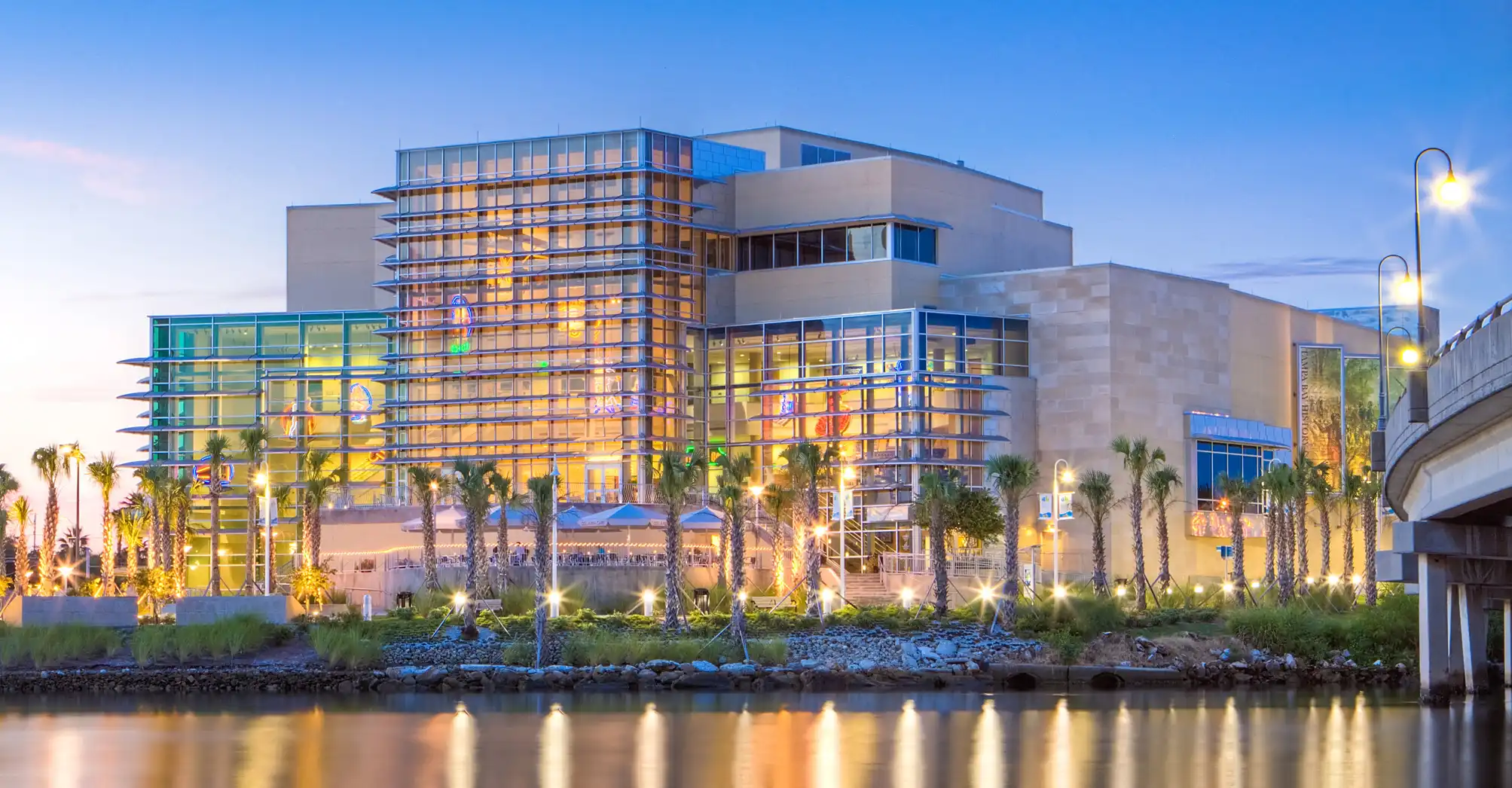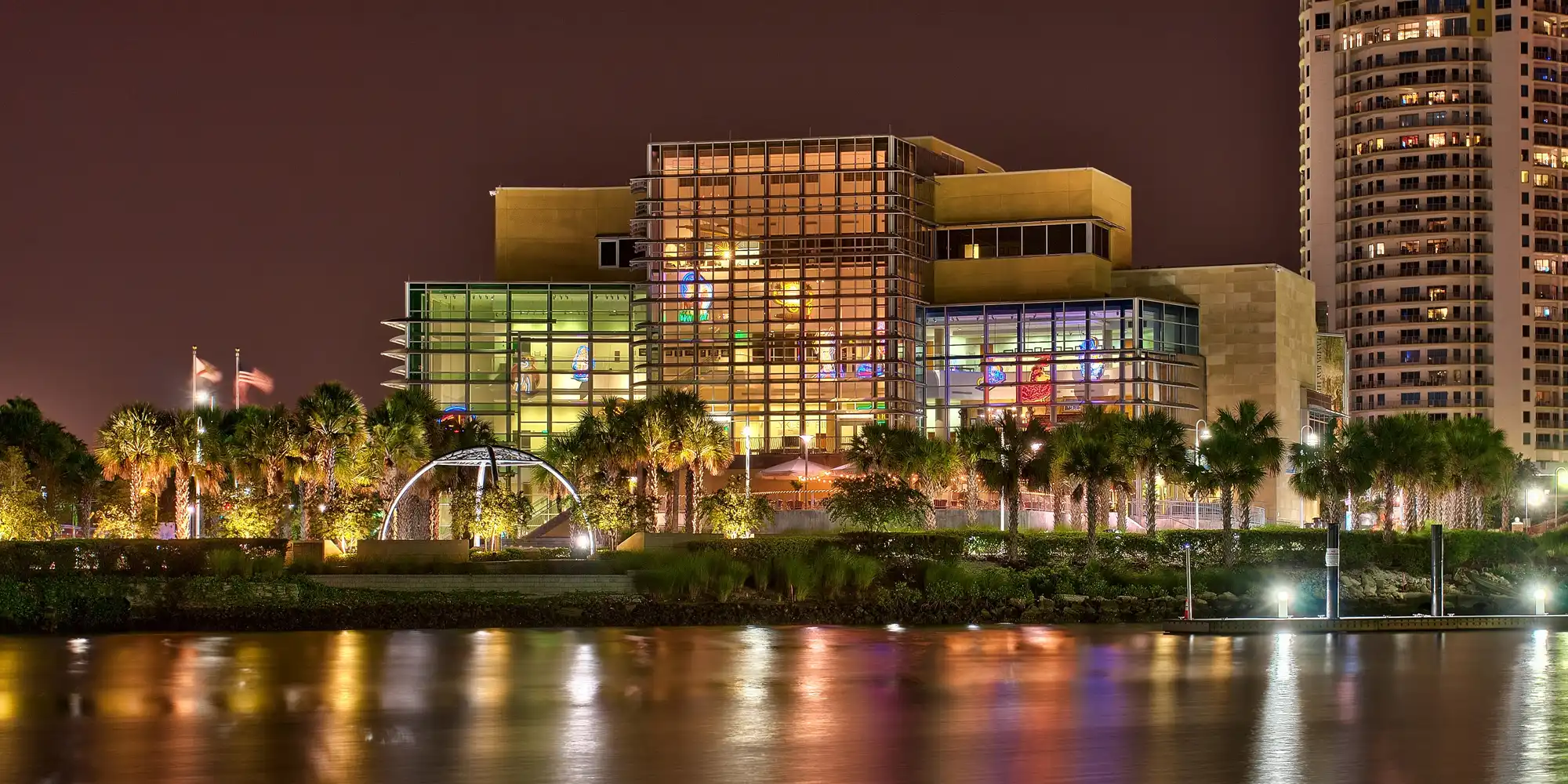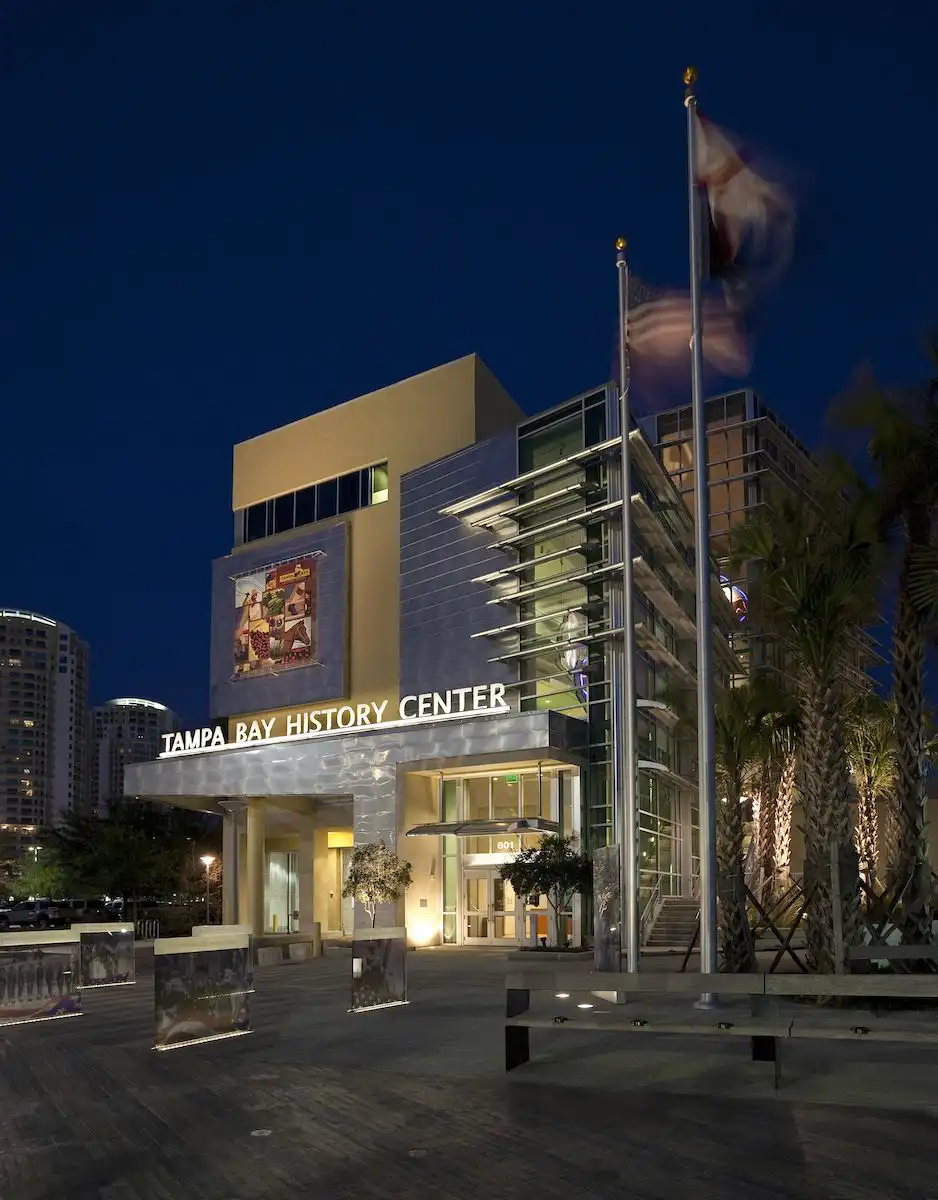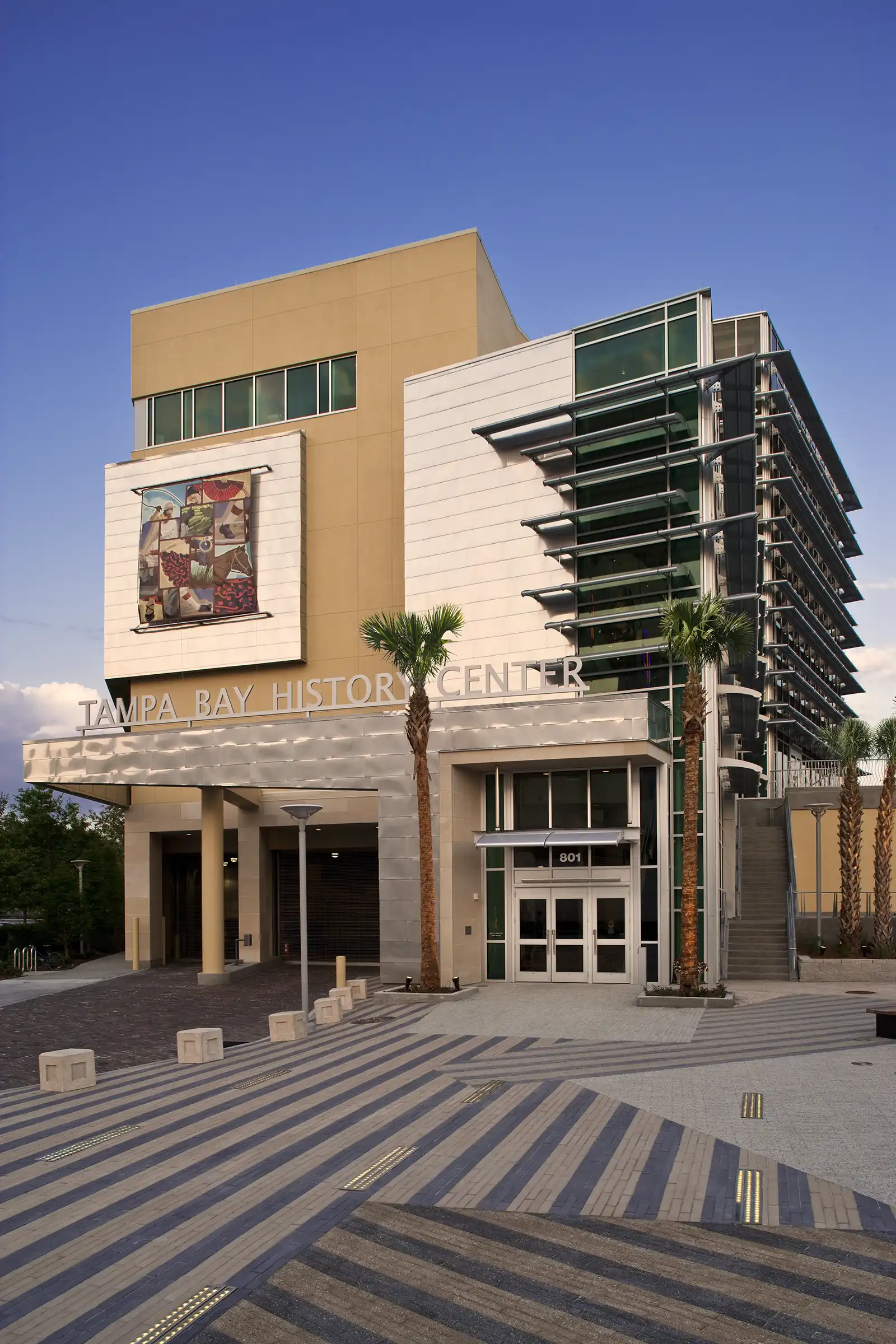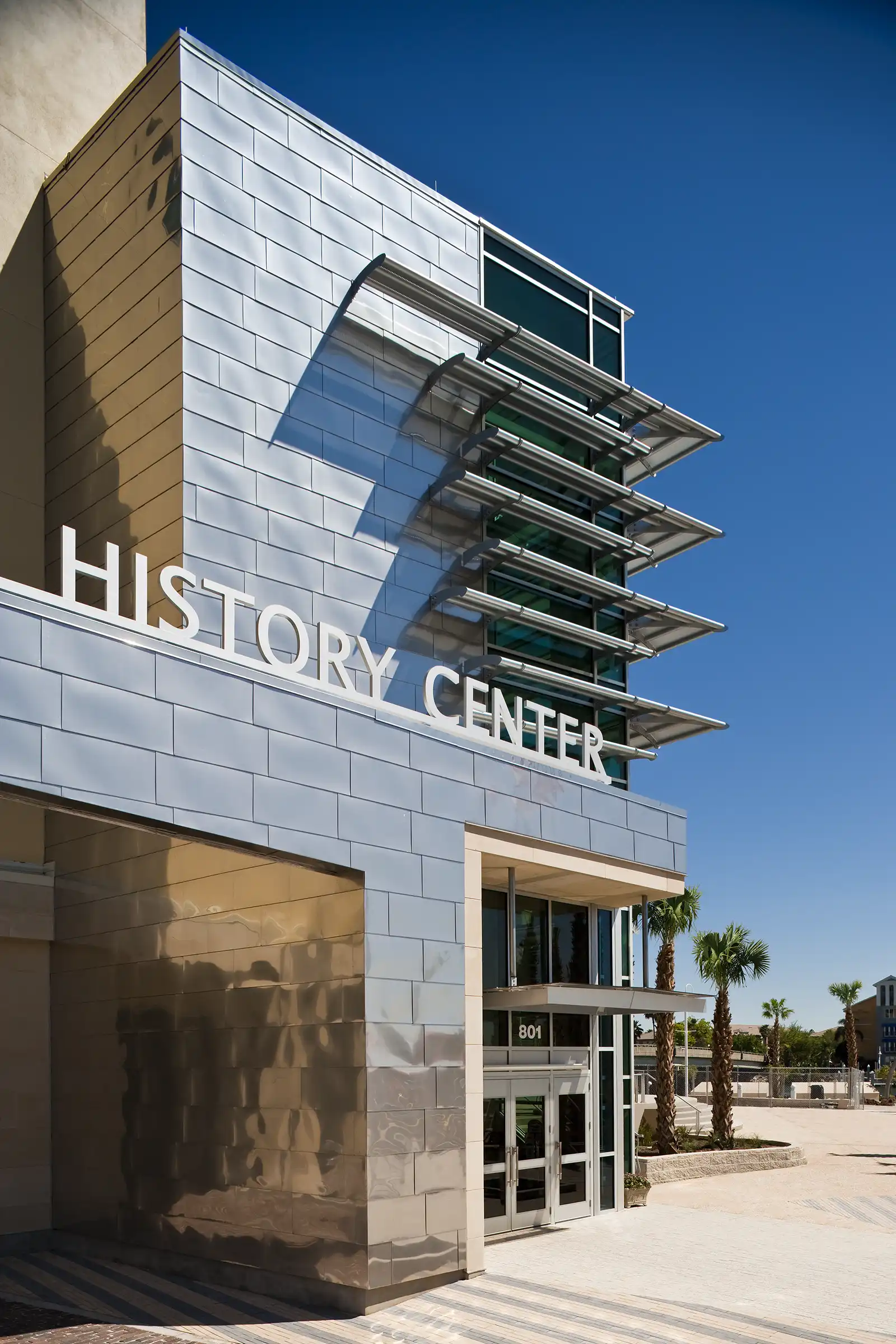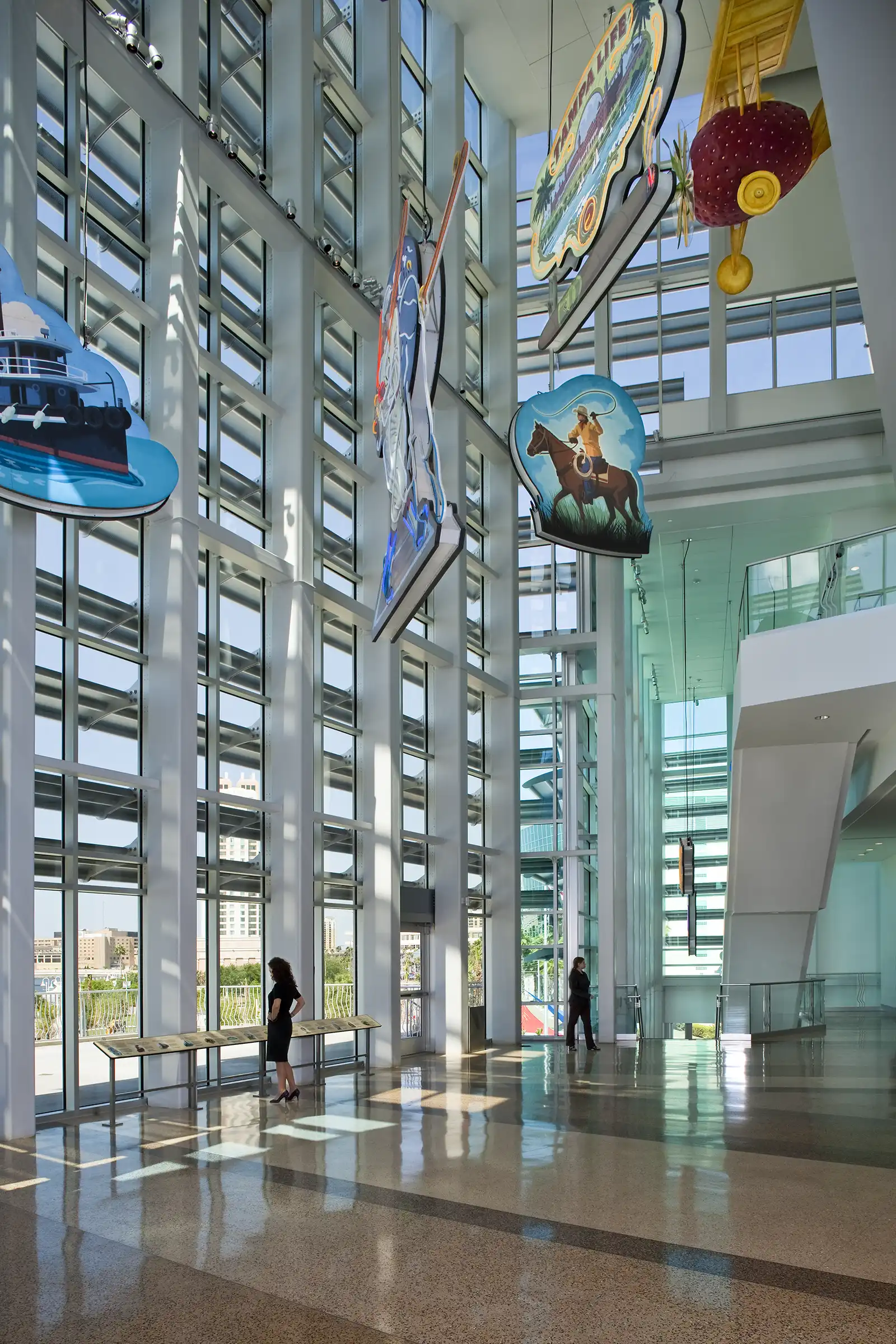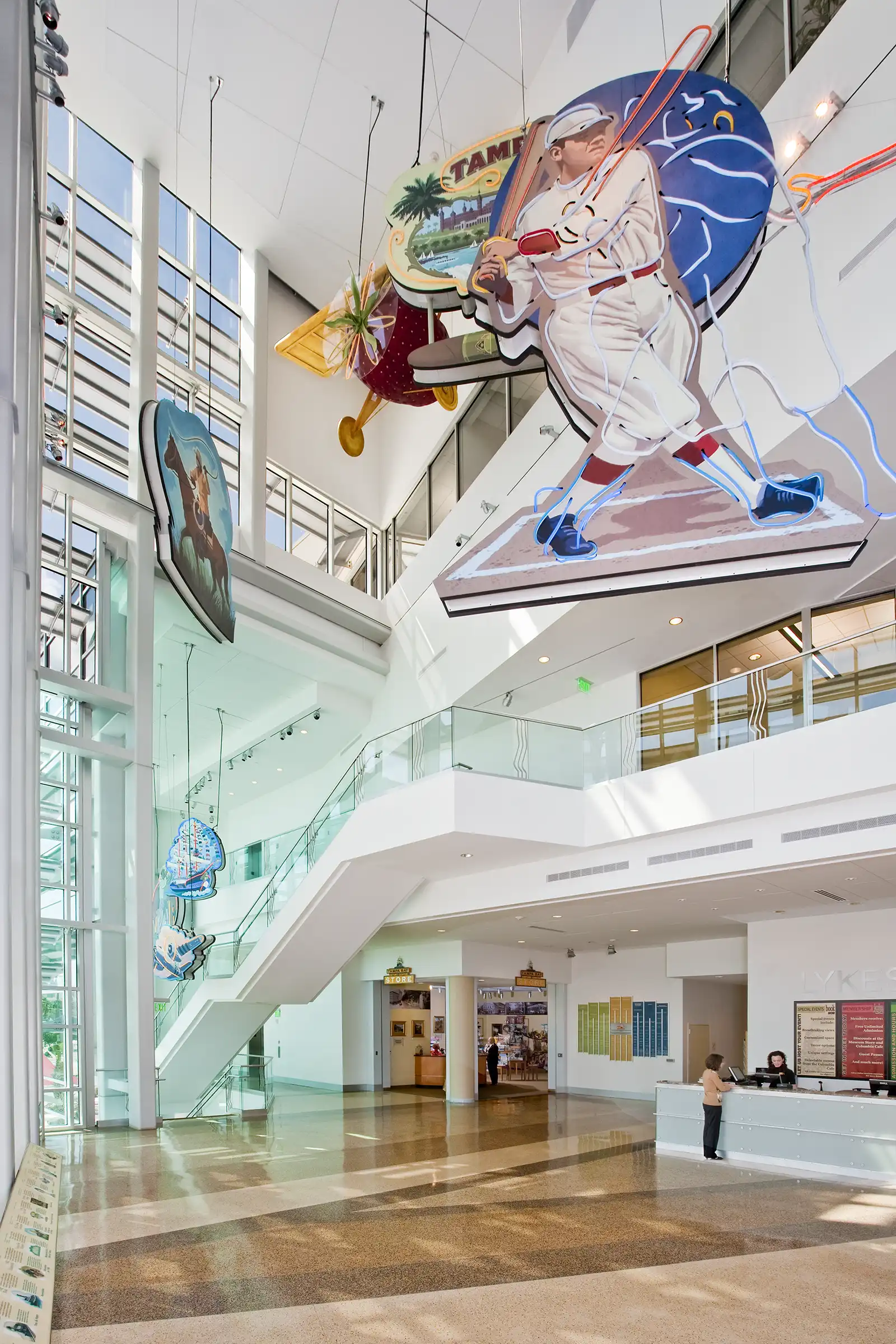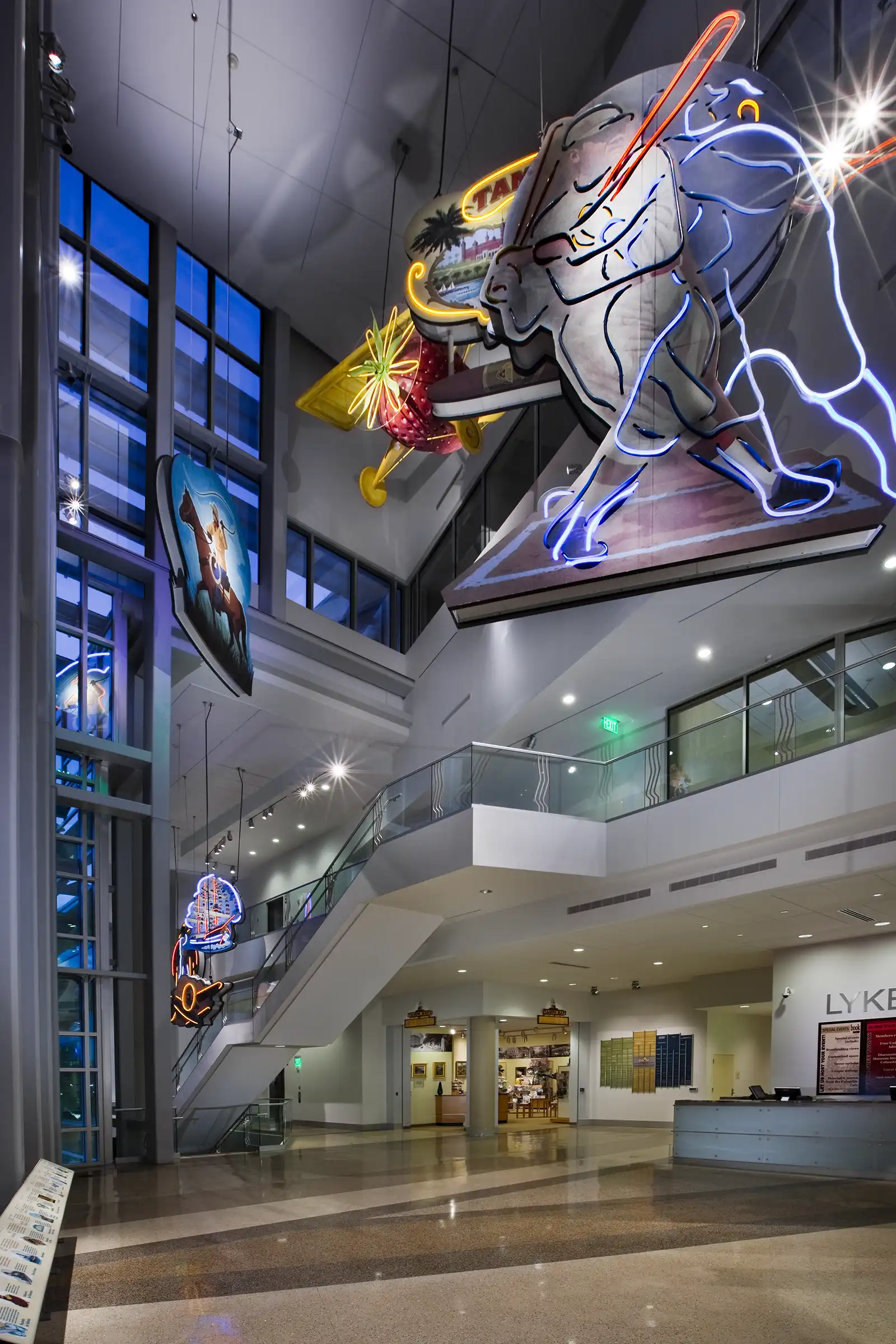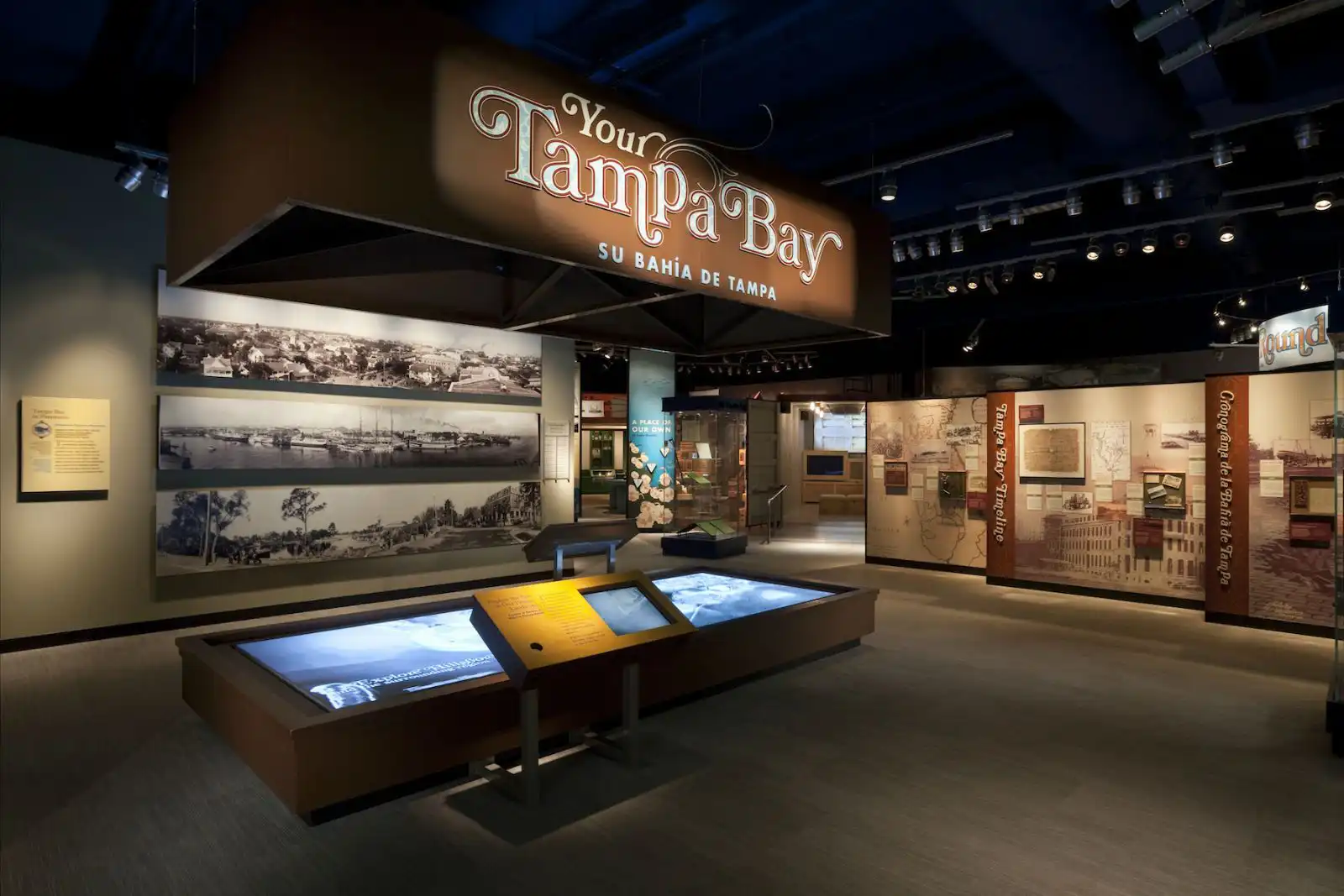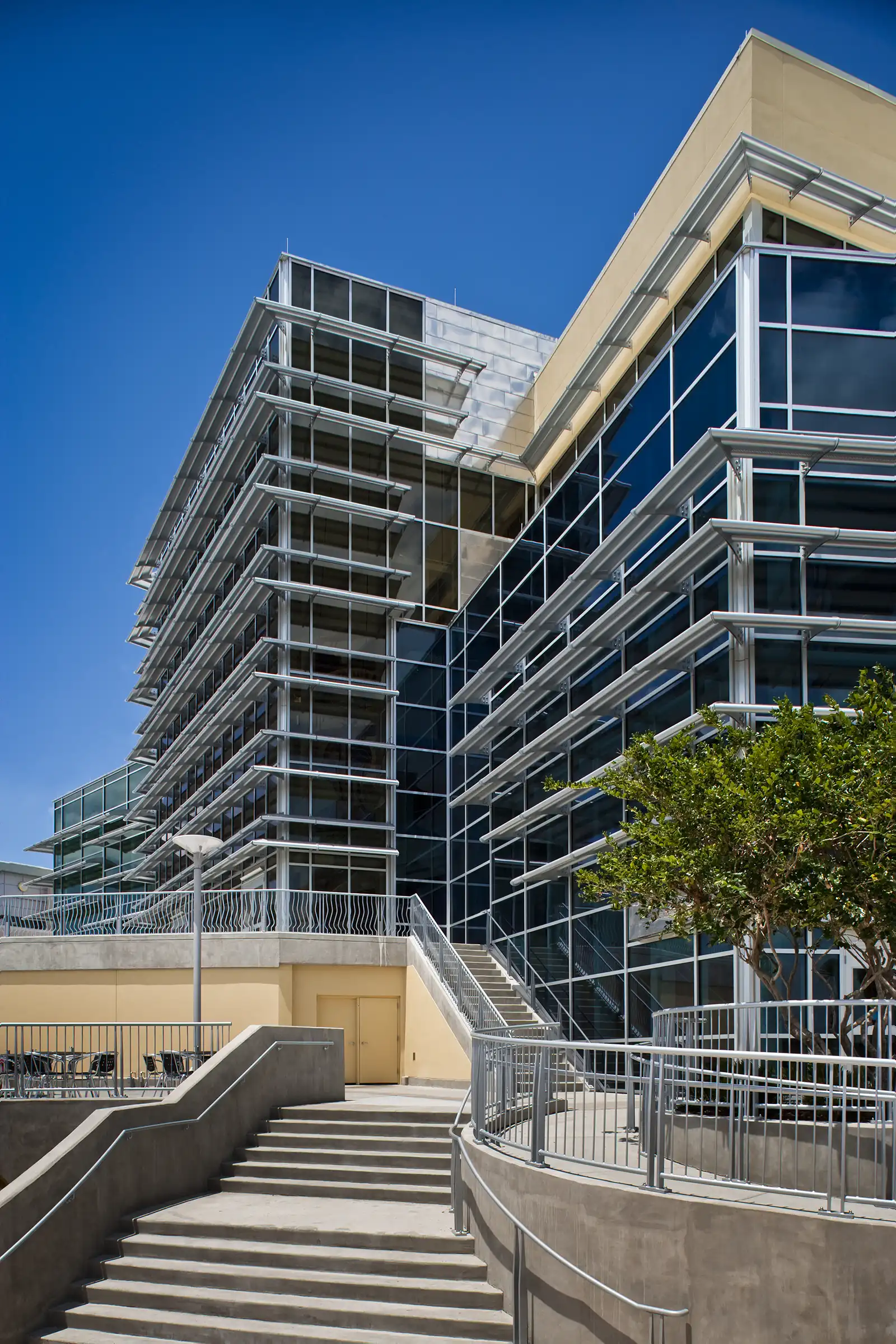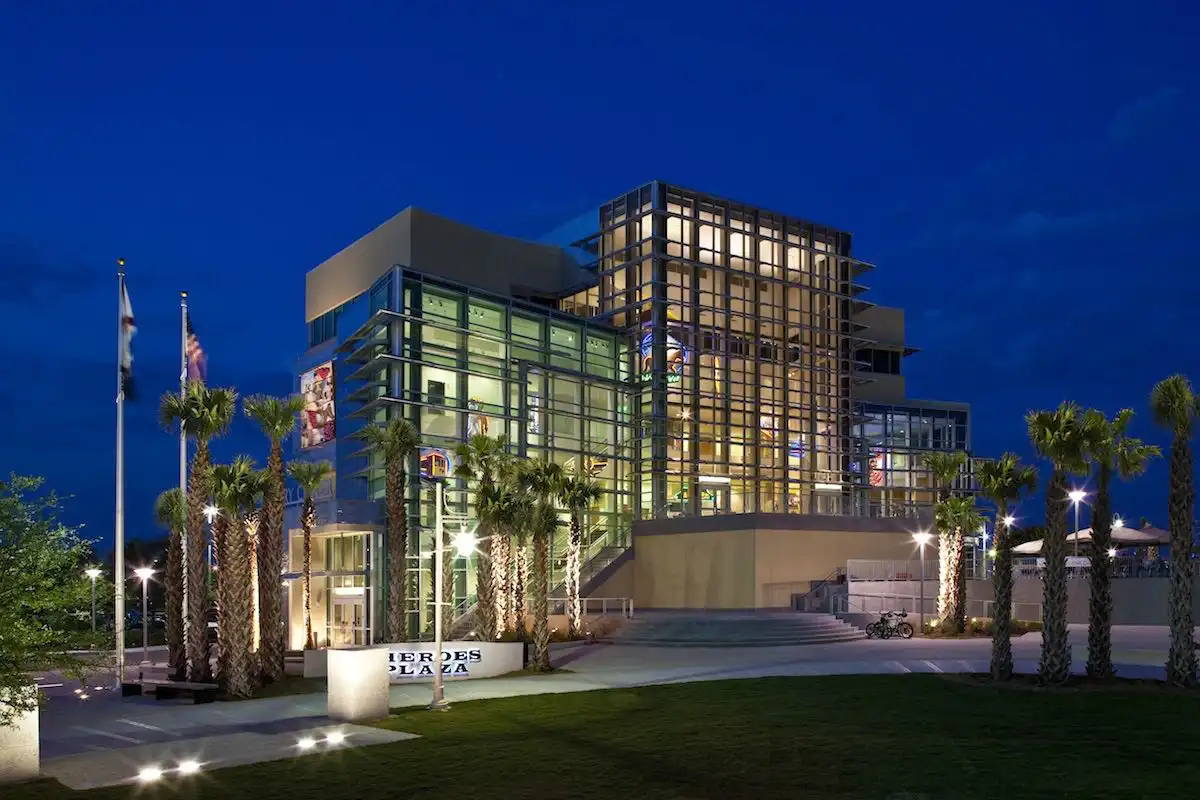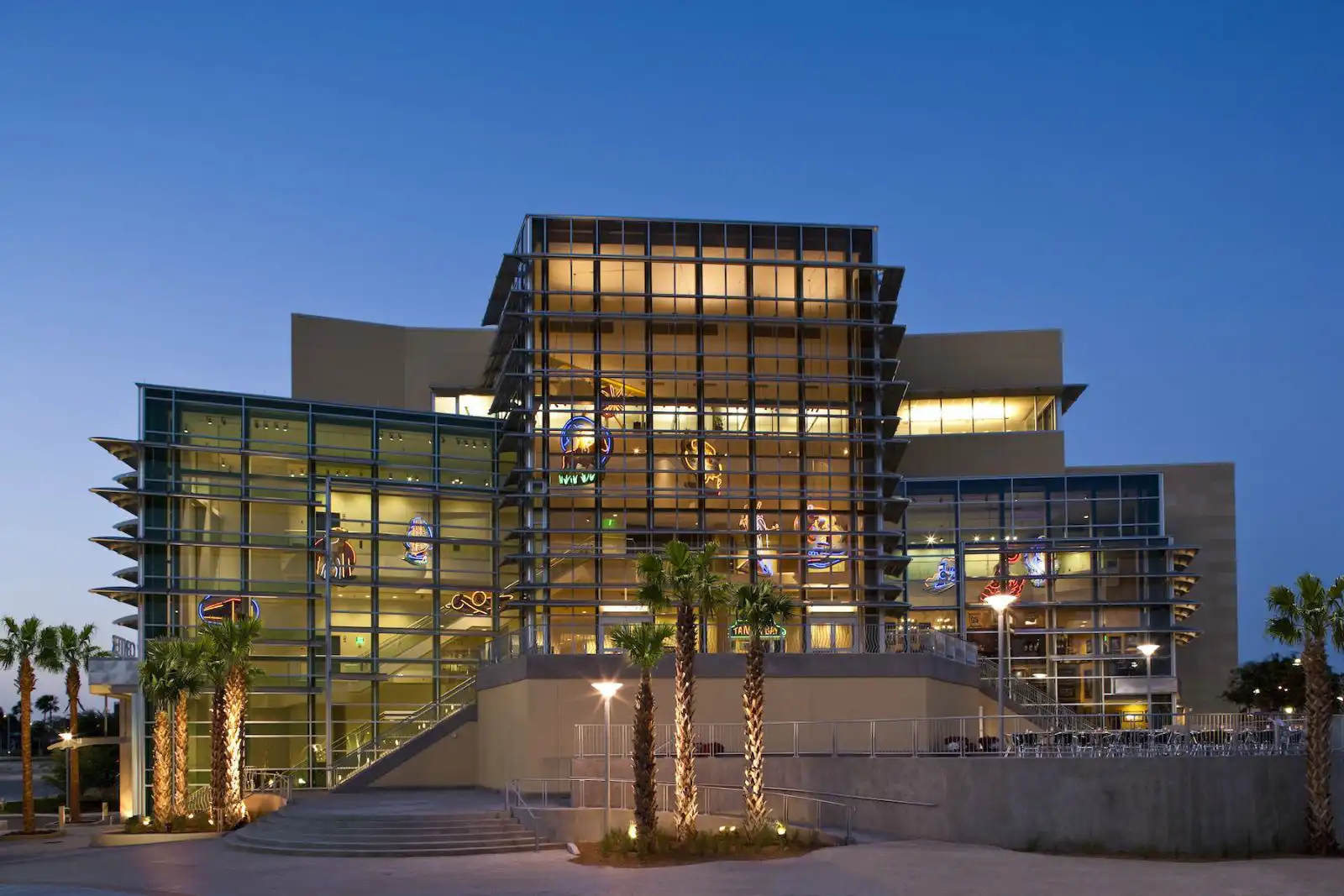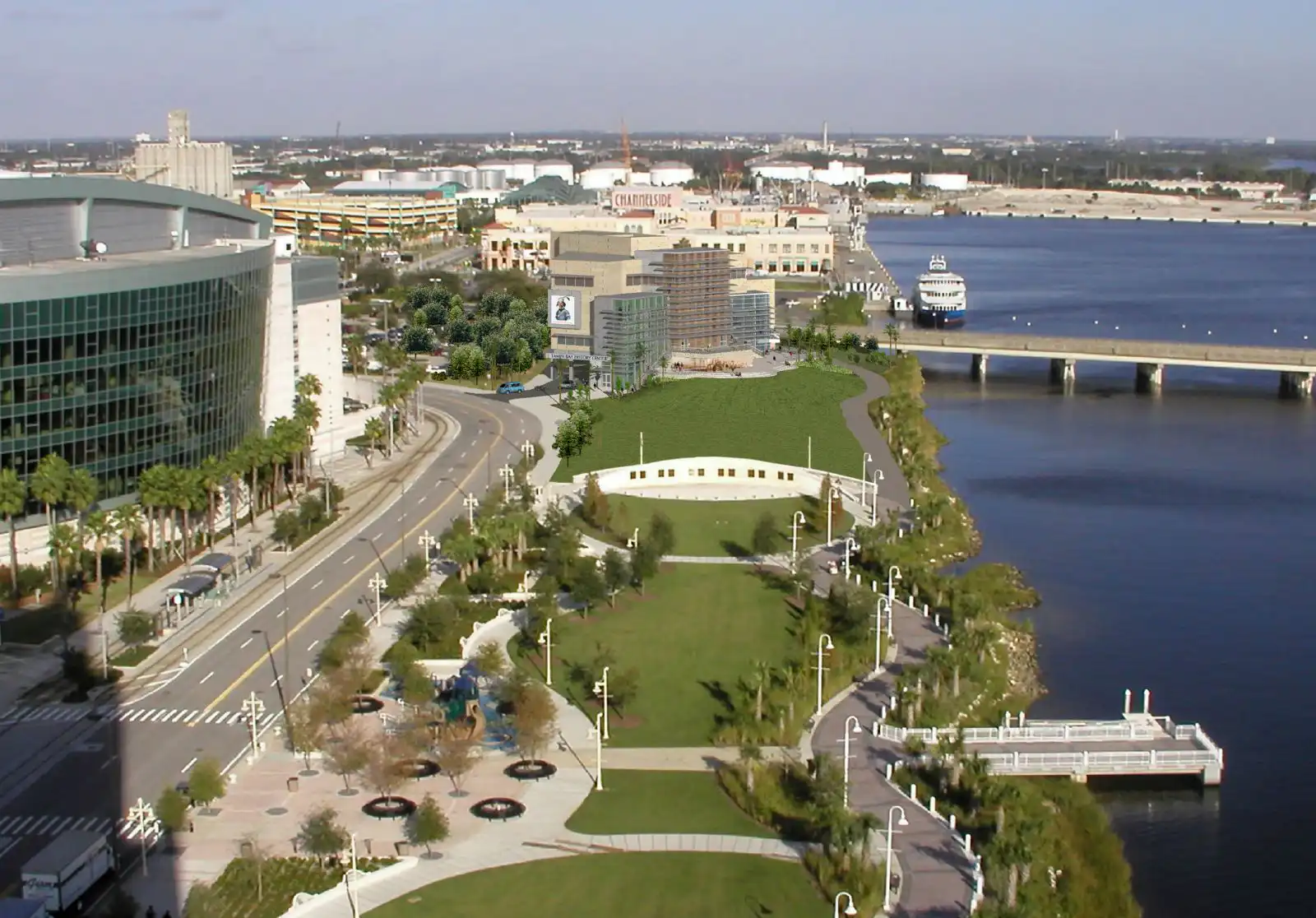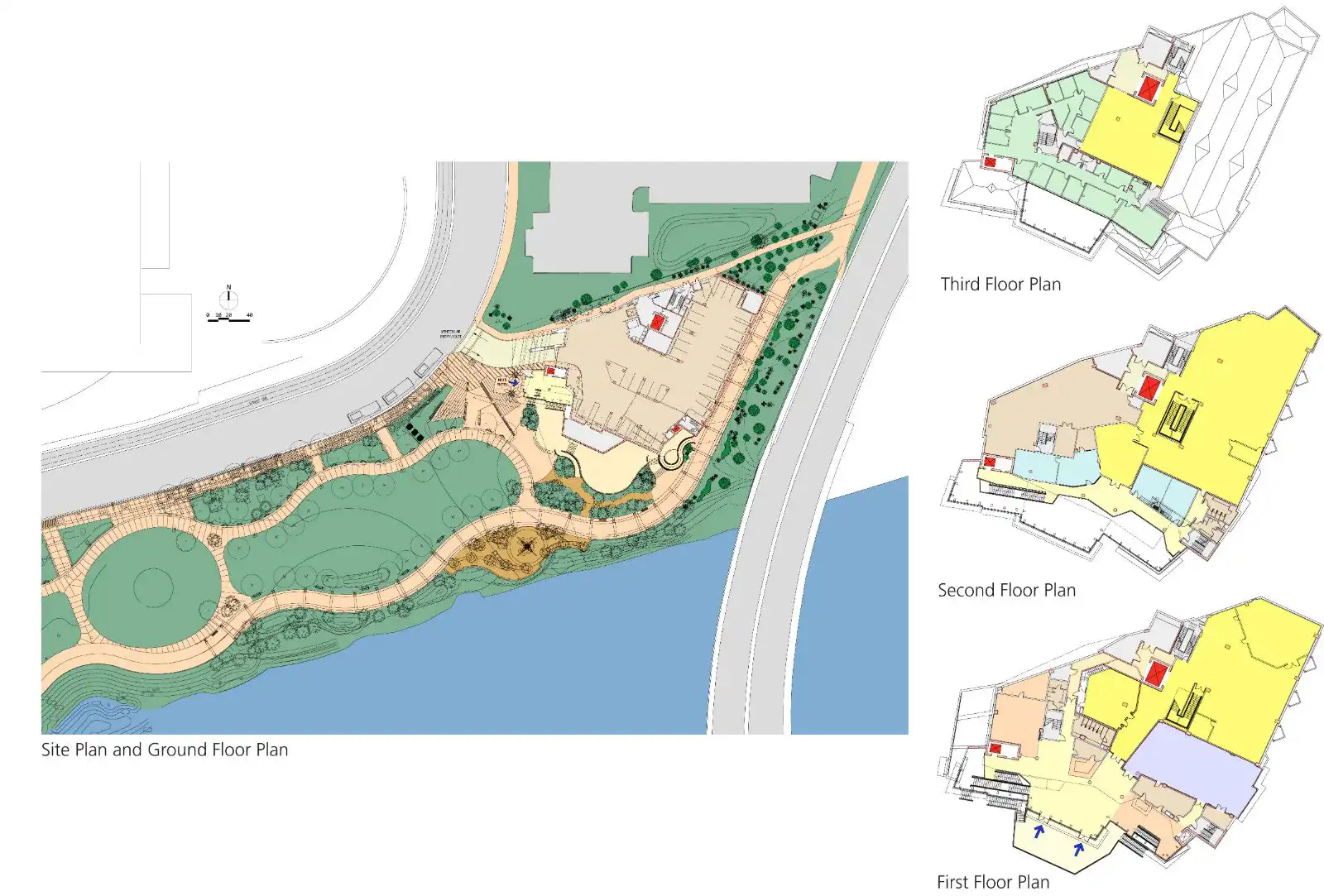Tampa Bay History Center
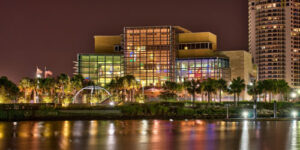
Location: Tampa, FL
Role: Architect & Museum Planner for New Museum; Led team of engineers and specialist consultants; collaborated with exhibit designers (Christopher Chadbourne)Program: Interactive history exhibits, theaters, lobby, cafe, gift shop, library, collections, function space, classrooms, exhibit support, and ofices
Building Area: 63,000 sf
Status: Opened in 2009
LEED Silver
Description:
The Tampa Bay History Center is located on a waterfront site in downtown Tampa positioned along the southern end of a two-mile long pedestrian riverwalk that connects many of the museums and cultural facilities in the city. The new museum tells the rich history of the Tampa region through immersive and interactive exhibits and theaters, designed by Christopher Chadbourne and Associates. The building is also designed to help draw together the diverse cultures and communities in the region through dramatic interior and exterior gathering and function spaces. The multi-level atrium lobby is filled with suspended colorful exhibit “icons” representing Tampa’s history and culture.
Mission: Making history transparent, engaging, and relevant was the driving force for the Tampa Bay History Center’s architecture. Constructed on the site that commemorates the ἀrst cultural contact between early Native Americans and European explorers in the 16th century, the architectural approach was to rethink the notion of the “stuffy” history museum. The result is a building that echoes the mission of the museum as a gateway to Tampa Bay’s history and a connection to a larger understanding of where we are now and how we impact our future. The museum was conceived as an open and engaging civic structure, designed to operate as a hub for the community, fully integrated into the surrounding urban environment.
Vision: In conceptualizing a history museum, the fundamental dilemma is which particular aspect, imagery, or story should the design evoke. For the History Center, the architectural solution was inspired by the nature of history itself, highlighting the diversity of Tampa Bay in an abstract, contemporary, and celebratory way. Through its interlocking volumes of contrasting materials, textures, and colors, the design interprets the idea that multiple concurrent and often conflicting stories together make up a region’s history and forge the identity of a place.

